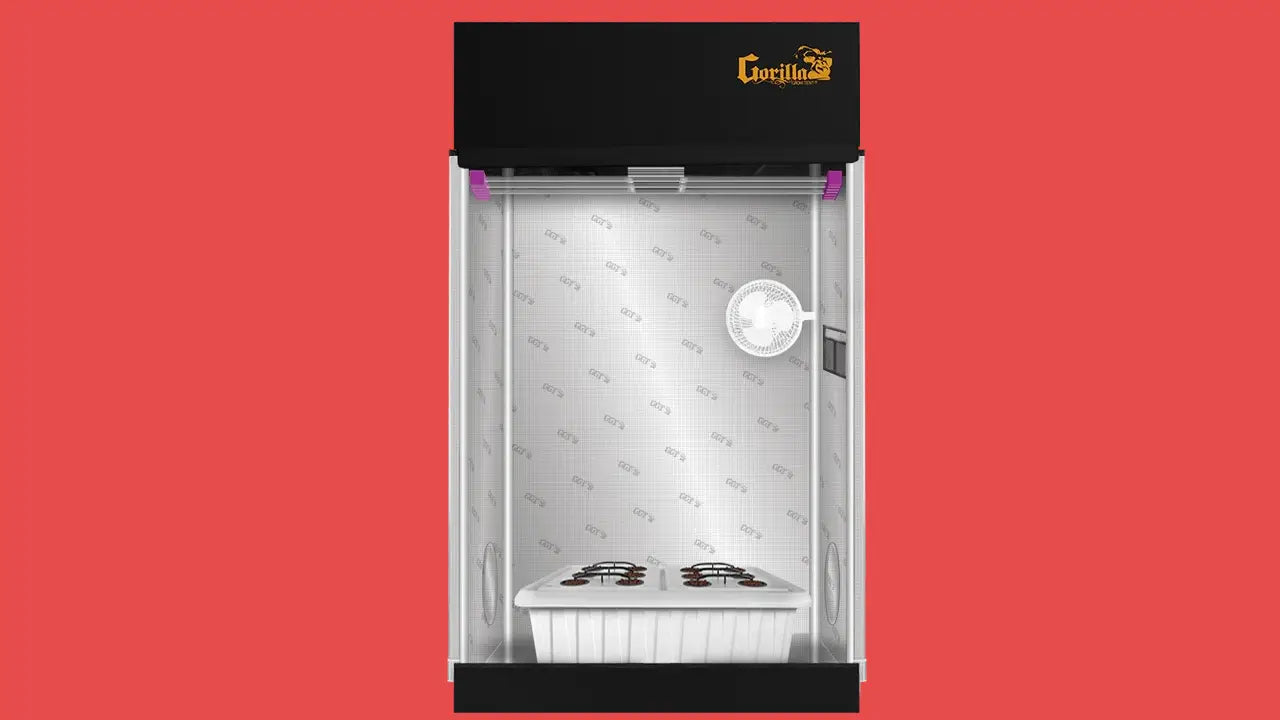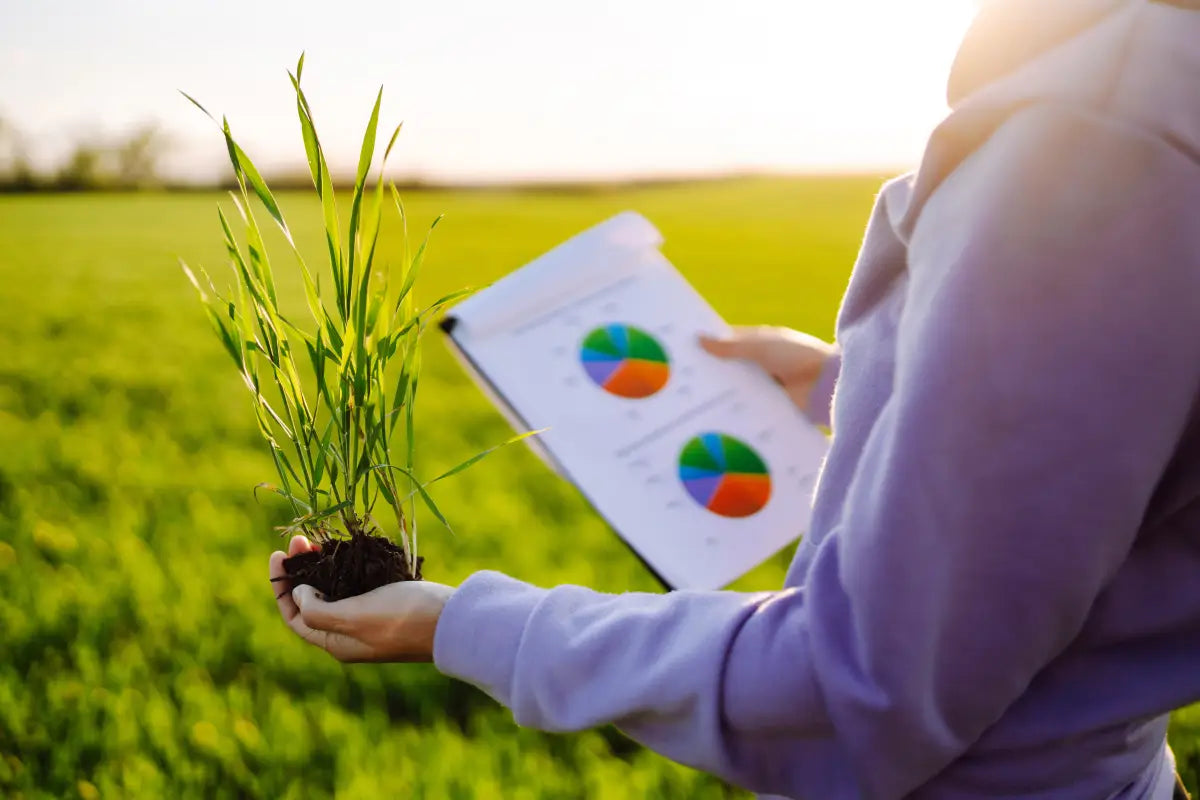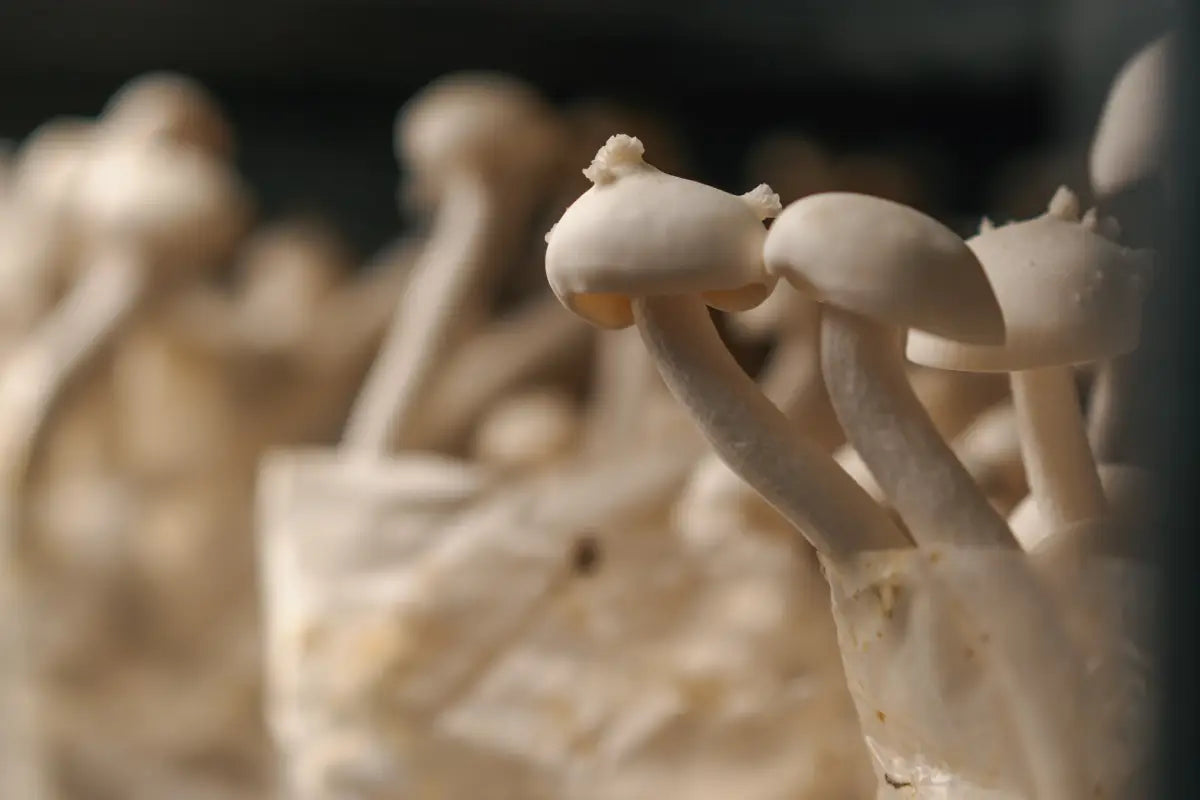
How to Keep Your Grow Tent Warm: The Complete Guide to Winter Growing Success
Quick Answer: Keep your grow tent warm by using appropriate heaters (ceramic or oil-filled radiators), improving insulation, optimizing lighting schedules, and maintaining proper airflow. Ideal temperatures range from 70-85°F (21-29°C) during the day and 60-70°F (15-24°C) at night for most plants.
Cold temperatures are one of the biggest challenges facing indoor growers, especially during winter months or in unheated spaces. When grow tent temperatures drop below optimal ranges, plant growth slows dramatically, nutrient uptake decreases, and yields suffer significantly. Many growers struggle with maintaining consistent warmth without creating hot spots or excessive energy costs.
This comprehensive guide reveals professional techniques for maintaining optimal temperatures in your grow tent year-round, ensuring healthy plant growth even in the coldest conditions.
Understanding Why Grow Tent Warmth is Critical for Plant Health
Temperature control directly impacts every aspect of plant physiology, making it one of the most crucial environmental factors for successful indoor growing. Understanding the science behind temperature requirements helps you make informed decisions about heating strategies.
The Physiology of Plant Temperature Requirements Plants are essentially biological machines that operate optimally within specific temperature ranges. When temperatures drop below 60°F (15°C), enzyme activity slows dramatically, reducing photosynthesis efficiency by up to 50%. This metabolic slowdown affects nutrient uptake, protein synthesis, and cellular energy production.
Most common grow tent plants thrive in these temperature ranges:
- Vegetables and Herbs: 70-80°F (21-27°C) day, 60-70°F (15-21°C) night
- Flowering Plants: 75-85°F (24-29°C) day, 65-75°F (18-24°C) night
- Tropical Plants: 80-90°F (27-32°C) day, 70-80°F (21-27°C) night
Cold Stress Symptoms to Watch For Recognizing cold stress early allows for quick intervention before permanent damage occurs:
- Slow or stunted growth with smaller leaves
- Purple or dark discoloration in stems and leaves
- Delayed flowering or poor flower development
- Increased susceptibility to diseases and pests
- Wilting despite adequate water availability
Economic Impact of Poor Temperature Control Inadequate heating doesn't just affect plant health—it directly impacts your return on investment. Cold-stressed plants can experience 30-50% yield reductions, extended growing cycles, and poor quality harvests that make indoor growing economically unviable.

Professional Heating Solutions for Grow Tents
Selecting the right heating equipment is crucial for maintaining consistent temperatures while ensuring plant safety and energy efficiency. Different heating methods work better for various tent sizes, ambient conditions, and plant requirements.
Ceramic Space Heaters - The Professional Standard Ceramic heaters provide even heat distribution without creating dangerous hot spots that could damage plants or create fire hazards. These units heat air efficiently while maintaining consistent output, making them ideal for most grow tent applications.
Key advantages:
- Even heat distribution prevents plant stress
- Built-in thermostats for precise temperature control
- Energy-efficient operation reduces electricity costs
- Compact designs fit easily in most tent configurations
Position ceramic heaters near air intake ports to ensure heated air circulates throughout the tent. Never place heaters directly near plants or flammable materials.
Oil-Filled Radiators for Stable Heat Oil-filled radiators excel at maintaining consistent temperatures over extended periods. They heat slowly but retain warmth longer, reducing temperature fluctuations that can stress plants.
These heaters work exceptionally well in larger grow tents where consistent, gentle heating is more important than rapid temperature changes. The radiant heat they provide closely mimics natural sunlight warming.
Infrared Heaters for Targeted Warming Infrared heaters warm objects directly rather than heating air, making them efficient for spot heating specific areas within grow tents. They're particularly useful for warming root zones or creating microclimates for different plant species.
Use infrared heaters to supplement other heating methods rather than as primary heat sources, as they can create uneven temperature distributions if used alone.
Heat Mats for Root Zone Warming Root zone heating often provides better results than air heating alone. Heat mats placed under containers warm root systems directly, promoting nutrient uptake and faster growth even when air temperatures are suboptimal.
Quality grow bags work excellently with heat mats, as their fabric construction allows heat transfer while providing proper drainage and aeration.
Advanced Insulation Techniques for Heat Retention
Proper insulation reduces heating costs while maintaining more stable temperatures throughout day/night cycles. Professional growers use multiple insulation strategies to create highly efficient growing environments.
Tent Wall Insulation Methods Gorilla grow tents feature superior 1680D canvas material that provides better insulation than standard grow tents. However, additional insulation can further improve heat retention in extreme conditions.
Reflective insulation panels can be added to tent walls in cold climates. These panels reflect heat back into the growing space while blocking cold air infiltration from outside.
Double-wall construction involves creating an air gap between the tent wall and additional insulation material. This dead air space acts as an insulation barrier, significantly improving heat retention.
Floor Insulation Strategies Cold floors drain significant heat from grow tents, especially concrete floors in basements or garages. Proper floor insulation prevents this heat loss while protecting root systems from cold stress.
Foam board insulation placed under the tent creates an effective thermal barrier. Use moisture-resistant foam designed for agricultural applications to prevent mold and degradation.
Thermal mats provide both insulation and gentle heating. These electric mats maintain consistent floor temperatures while protecting against heat loss to cold surfaces.
Sealing Air Leaks Even small air leaks can dramatically reduce heating efficiency. Professional growers systematically seal all potential leak points to maintain consistent internal temperatures.
Common leak locations include:
- Zipper areas where fabric meets frame
- Ventilation port openings when not in use
- Cable pass-through points
- Tent corners and seam connections
Use weather stripping, tape, or fabric patches to seal leaks while maintaining necessary ventilation capabilities.
Smart Temperature Monitoring and Control Systems
Modern temperature management relies on precise monitoring and automated control systems that maintain optimal conditions without constant manual intervention. Professional-grade monitoring ensures consistent growing conditions while preventing equipment failures.
Advanced Temperature Monitoring GXi temperature and humidity sensors provide laboratory-grade accuracy (±0.3°C) with real-time smartphone monitoring and alerts. This precision enables fine-tuned environmental control that maximizes plant health and growth rates.
Place multiple sensors at plant canopy level, not near heaters or walls, for accurate readings that reflect actual plant conditions. The GXi ecosystem automatically logs temperature data, helping you track heating system performance and identify optimization opportunities.
Automated Climate Control Smart thermostats and controllers eliminate guesswork while preventing temperature extremes that can damage plants or waste energy. These systems maintain precise temperature ranges while adapting to changing conditions automatically.
Progressive heating control gradually adjusts heater output based on temperature trends rather than simple on/off operation. This approach prevents temperature swings while using energy more efficiently.
Programmable temperature schedules match heating patterns to plant needs and energy costs. Program lower nighttime temperatures to reduce energy consumption while maintaining plant health.
Backup Systems and Redundancy Professional growers always implement backup heating systems to prevent crop loss from equipment failures. Cold temperatures can damage or kill plants within hours, making redundancy essential for valuable crops.
Dual heating systems provide automatic backup if primary heaters fail. Modern controllers can automatically switch to backup systems while sending alerts to grower smartphones.
Battery backup power keeps monitoring systems and critical equipment running during power outages. This protection prevents unnoticed temperature drops that could destroy entire crops.

Energy-Efficient Heating Strategies
Heating costs can quickly make indoor growing uneconomical if not managed properly. Professional techniques reduce energy consumption while maintaining optimal growing conditions.
Heat Recovery and Recirculation Exhaust heat recovery systems capture warm air leaving the tent and transfer that heat to incoming fresh air. This process significantly reduces heating requirements while maintaining necessary air exchange rates.
Thermal mass systems store heat during warm periods and release it when temperatures drop. Water barrels, concrete blocks, or phase-change materials can provide several hours of heat storage with proper design.
Lighting Heat Utilization LED grow lights produce less heat than traditional lighting, but strategic scheduling can supplement heating needs while providing necessary light for plant growth.
Heat synchronization coordinates lighting and heating schedules to minimize total energy consumption. Run lights during coldest periods to provide both illumination and supplemental heating.
External driver placement for LED lights reduces heat inside the tent during warm periods while allowing drivers to be relocated inside during cold weather for supplemental heating.
Time-of-Use Energy Management Many utility companies offer lower electricity rates during off-peak hours. Smart heating controllers can shift heating loads to these cheaper periods while using thermal mass to maintain temperatures during expensive peak hours.
Load balancing distributes heating across multiple systems to avoid peak demand charges while ensuring adequate warmth throughout the tent.
Optimizing Airflow for Heat Distribution
Even heating requires proper air circulation to prevent hot spots and cold zones that can stress plants. Professional airflow management ensures consistent temperatures throughout the growing space.
Strategic Fan Placement Circulation fans should create gentle air movement without creating drafts that could stress plants. Position fans to move warm air from heaters throughout the tent while avoiding direct airflow on sensitive plants.
Heat distribution patterns require understanding of how warm air moves within enclosed spaces. Warm air rises, so position intake fans low and exhaust fans high to maintain proper circulation.
Multiple circulation zones work better than single large fans in most grow tent applications. Small tent setups benefit from 2-3 small fans creating gentle air movement rather than one powerful fan.
Preventing Heat Stratification Thermal layering occurs when warm air accumulates near the tent ceiling while cold air remains at plant level. Proper ventilation prevents this stratification while maintaining necessary heating efficiency.
Destratification fans specifically designed to mix air layers can solve heating problems in taller tents. These fans move warm ceiling air down to plant level without creating harmful drafts.
Heat Recovery Ventilation Balanced ventilation systems exchange stale interior air with fresh outdoor air while recovering heat from the exhaust stream. This approach maintains air quality while minimizing heating losses.
Heat exchangers transfer warmth from outgoing air to incoming fresh air, reducing the heating load on primary systems while ensuring adequate air quality for plant health.
Troubleshooting Common Heating Problems
Even well-designed heating systems can develop issues that affect plant health and energy efficiency. Professional troubleshooting techniques quickly identify and resolve common problems.
Uneven Temperature Distribution Symptoms: Some areas consistently warmer or cooler than others, plant growth varies by location Causes: Poor air circulation, inadequate heater placement, or insufficient heating capacity Solutions: Add circulation fans, relocate heaters for better distribution, upgrade to higher-capacity heating systems
Excessive Energy Consumption Symptoms: High electricity bills, heaters running constantly, poor heating efficiency Causes: Inadequate insulation, air leaks, undersized heating equipment, or poor system design Solutions: Improve insulation, seal air leaks, right-size heating equipment, implement smart controls
Temperature Fluctuations Symptoms: Wide temperature swings, inconsistent plant growth, stress symptoms Causes: Poor thermostat placement, oversized heaters, inadequate thermal mass Solutions: Relocate temperature sensors, add thermal mass, implement progressive heating controls
Equipment Failures Symptoms: Sudden temperature drops, heater malfunction, system shutdowns Causes: Equipment age, poor maintenance, electrical issues, environmental damage Solutions: Implement preventive maintenance, install backup systems, upgrade aging equipment
Seasonal Heating Strategies and Maintenance
Different seasons require adjusted heating strategies to maintain optimal growing conditions while managing energy costs effectively.
Winter Heating Optimization During coldest months, heating becomes the primary energy consumer in most grow operations. Seasonal heating strategies maximize efficiency while ensuring plant health.
Thermal envelope improvements become most cost-effective during winter months. Additional insulation, weatherstripping, and air sealing provide immediate returns on investment.
Load shifting strategies take advantage of thermal mass and lower nighttime electricity rates to reduce peak heating costs while maintaining optimal plant conditions.
Spring and Fall Transitional Periods Variable heating requirements during transitional seasons require flexible systems that can adapt to changing conditions without wasting energy or stressing plants.
Progressive heating systems automatically adjust output based on outdoor temperature trends and internal conditions, preventing overheating during warm days while ensuring adequate warmth during cold nights.
Summer Heating Considerations Even summer months may require heating in air-conditioned spaces or during unusual cold spells. Minimal heating systems provide backup warmth without interfering with cooling systems.
Heat pump systems can provide both heating and cooling as needed, making them ideal for year-round growing operations in variable climates.
Equipment Maintenance Schedules Preventive maintenance prevents equipment failures during critical periods while ensuring optimal efficiency throughout the growing season.
Monthly maintenance tasks:
- Clean heater intake filters and vents
- Test thermostat calibration and backup systems
- Inspect electrical connections and safety systems
- Verify proper air circulation and temperature distribution
Seasonal maintenance:
- Professional heater inspection and service
- Insulation inspection and repair
- Control system calibration and testing
- Emergency system testing and battery replacement
FAQ Section
What's the best type of heater for a small grow tent? Ceramic space heaters with built-in thermostats work best for small tents (2x2 to 4x4). They provide even heat distribution, precise temperature control, and energy efficiency without creating dangerous hot spots.
How much does it cost to heat a grow tent in winter? Heating costs vary by tent size, insulation quality, and local electricity rates. A well-insulated 4x4 tent typically costs $30-60 monthly to heat during winter months, while poorly insulated tents can cost $100+ monthly.
Can I use a regular space heater in my grow tent? Yes, but choose ceramic or oil-filled radiator types with built-in thermostats and safety features. Avoid fan-forced heaters that can create excessive air movement or uneven heating patterns.
What temperature should I maintain at night in my grow tent? Most plants prefer nighttime temperatures 10-15°F cooler than daytime temperatures. Maintain 60-70°F (15-21°C) at night for most vegetables and herbs, with tropical plants preferring 70-75°F (21-24°C).
How do I prevent my grow tent heater from creating hot spots? Use ceramic heaters with built-in fans, position heaters near air intake ports, and ensure adequate air circulation with oscillating fans. Never place heaters directly next to plants or in corners with poor airflow.
Is it safe to run heaters overnight in my grow tent? Yes, when using appropriate equipment with built-in safety features like tip-over protection, overheat shutoffs, and proper electrical connections. Always follow manufacturer guidelines and inspect equipment regularly.
How can I reduce heating costs without affecting plant health? Improve insulation, seal air leaks, use programmable thermostats, implement heat recovery systems, and coordinate heating with lighting schedules. These strategies can reduce heating costs by 30-50% while maintaining optimal growing conditions.
Summary
Key Takeaways: Maintaining optimal grow tent temperatures requires proper heating equipment, effective insulation, smart controls, and strategic airflow management. Ceramic heaters, oil-filled radiators, and heat mats provide safe, efficient heating while professional monitoring and automation ensure consistent conditions for maximum plant health and yields.
Transform your winter growing success with professional grow tent systems engineered for superior insulation and climate control. From precision temperature monitoring to complete growing kits, every component works together for optimal growing conditions year-round.
Ready to optimize your grow tent heating system? Explore our complete range of grow tents and environmental control equipment designed for professional indoor growing success.
Learn more about complete environmental control with our guides on temperature monitoring placement, grow tent cooling strategies, and optimal airflow management.

Lena Myles
I'm a mushroom enthusiast and home cook based in Oregon. I'm passionate about foraging and creating fungi-focused recipes, especially delicious, plant-based dishes using gourmet mushrooms like trumpet, shiitake, and oyster. When I’m not in the kitchen, you’ll usually find me wandering the woods in search of new wild flavors.


